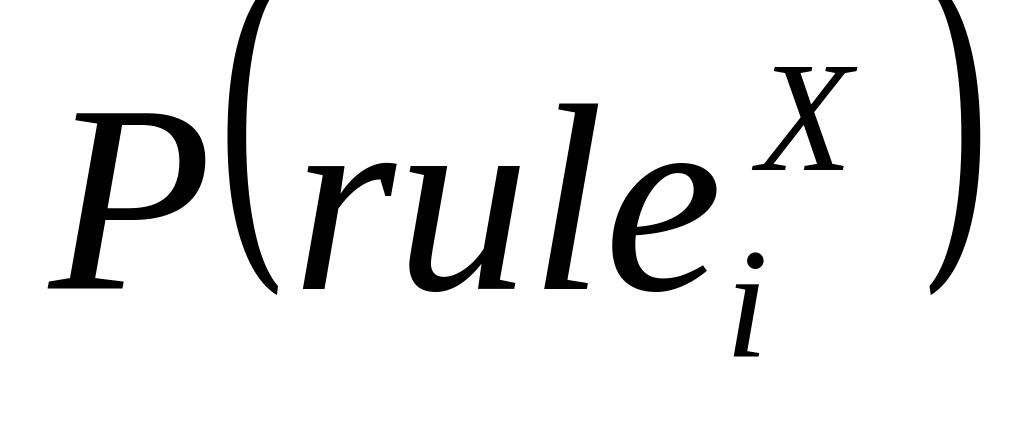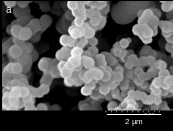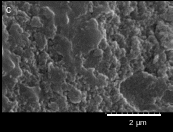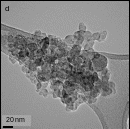CARBOCAT VII SYNTHESIS OF CARBON NANOMATERIALS 1217 JUNE 2016
Carbocat vii Synthesis of Carbon Nanomaterials 1217 June 2016
Instructions for preparing an abstract for CARBOMAT 2010 – Workshop on Carbon-based Low Dimensional Materials, 6-8 October, 2010 – Catania, Italy (Title in Times New
Carbocat VII Synthesis of carbon nanomaterials
12-17 June 2016, Strasbourg - France
Effect of the textural modification of sulfonated hydrothermal carbon for esterification reaction.
Laura Roldán1, Enrique García-Bordejé1, Elísabet Pires2, José M. Fraile2
1Instituto de Carboquímica (ICB-CSIC), Miguel Luesma Castán 4, 50018, Zaragoza, Spain, [email protected].
2Instituto de Síntesis Química y Catálisis Homogénea (ISQCH), Facultad de Ciencias, C.S.I.C. - Universidad de Zaragoza, E-50009 Zaragoza
Carbon materials prepared by hydrothermal carbonisation have gained a high interest recently because they are prepared from renewable resources, using mild conditions and it is a bottom up approach that enables a high level of control over morphology and composition [1]. One of the main drawbacks for the direct application of hydrothermal carbon is its negligible surface area. Despite its apparent low surface area, we have demonstrated that the sulfonation of hydrothermal carbon produces an acid catalyst affording TOFs in esterification reactions higher than other heterogeneous acid catalyst [2].
Here, in order to increase the porosity of hydrothermal carbon and study its effect in esterification reaction, we have followed two strategies. First, we have prepared mesoporous hydrothermal carbon from glucose using hypersaline conditions during the synthesis. Second, we have calcined hydrothermal carbon at different temperatures in inert atmosphere. The different hydrothermal carbon materials have been sulfonated, characterised and tested in esterification reactions.
Microporous hydrothermal carbon (HTC) was synthetised from an aqueous D-glucose solution (25 ml, 1M), which was introduced in an autoclave, heated at a 195ºC and kept during 18 h. In the other synthesis protocol, micro-mesoporous hydrothermal carbon (HTCsalt) was prepared using hypersaline conditions, mixing 3g of glucose, 4.5 g of ZnCl2 and 1.5 ml of H2O. After the synthesis, the solid was thoroughly washed with water to remove all the Zn. The solid carbon prepared using these two methods were calcined at different temperatures Fromm 300 to 700ºC. To prepare the sulfonated acid catalyst, the carbon materials were treated with sulfuric acid (20 mL H2SO4/g solid) at 150 ºC during 15 h and they were washed with water at 90 ºC until neutrality. The materials were characterised by elemental analysis, N2 and CO2 physisorption, TEM, SEM, XRD and Raman. The sulfonated carbon materials were tested as acid catalyst in the esterification of palmitic acid with metanol at 85ºC. The products were analyzed by GC (HP-7820A) using a HP-5MS column.
Table 1 shows the textural characterisation of
RESULTADOS Y DISCUSIÓN
La Tabla 1 muestra la caracterización textural de HTC y HTCsal tras la síntesis hidrotermal y después de la calcinación en atmósfera inerte a 700 ºC. El área de HTC determinada por adsorción de N2 es despreciable mientras que la determinada por adsorción de CO2 es de 142 m2g-1. Este área es debida a la presencia de ultramicroporos (tamaño medio < 0.7 nm). Por el contrario, el área de HTCsal medida por adsorción de N2 no es despreciable (373 m2g-1) y es superior a la determinada por adsorción de CO2. Esto es debido a que aproximadamente la mitad de la porosidad está en el rango de los mesoporos (2-50 nm).
Tabla 1. Propiedades texturales de HTC, HTCsal y ambos calcinados a 700 ºC
|
|
Adsorción de N2 |
Adsorción de CO2 |
||||
|
Muestra |
SN2a |
Vp |
Vmic a |
Vmes b |
SCO2a |
Vu |
|
HTC |
7.0 |
0.014 |
0.0020 |
0.012 |
142 |
0.06 |
|
HTC700 |
370 |
0.220 |
0.2100 |
0.008 |
608 |
0.24 |
|
HTCsal |
373 |
0.258 |
0.130 |
0.128 |
252 |
0.10 |
|
HTCsal700 |
520 |
0.263 |
0.197 |
0.066 |
511 |
0.22 |
La morfología de las muestras se estudió por SEM y TEM. El carbón microporoso HTC se produce en forma de polvo y está formado por esferas de tamaño medio de 300 nm (Figura 1 a,b). El carbón micro-mesoporoso HTCsal se obtiene en forma de un aerogel monolítico y las partículas primarias tiene tamaño de 10 nm (Figure 1d). Los huecos entre estas partículas primarias dan lugar a la mesoporosidad.
|
|
|
|
|
Figure 1. Imágenes de SEM (a,c) y TEM (b,d) de carbones hidrotermales microporosos HTC (a,b) y micro-mesoporosos HTCsal (c,d)
La calcinación a diferentes temperaturas condujo a un ligero cambio de las propiedades texturales y la composición. Al aumentar la temperatura de calcinación se produce un ensanchamiento de los microporos, el contenido de oxígeno disminuye sustancialmente y el material es más grafítico. Tanto la carbonización a diferentes temperaturas como el desarrollo de la mesoporosidad modifican la actividad y recuperabilidad en la reacción de esterificación de ácido palmítico con metanol con respecto al carbón HTC microporoso sin calcinar. En presencia de un disolvente polar como el metanol, los ultramicroporos de HTC se ensanchan permitiendo que los reactantes penetren a los centros activos situados dentro de estos poros. Esto da como resultado, que el HTC muestre a una actividad superior y mejor recuperabilidad que los carbones calcinados e incluso que los mesoporosos. Sin embargo, la mesoporosidad de HTCsal permite mantener una elevada actividad incluso tras calcinación a 700ºC, mientras que el HTC calcinado a esa misma temperatura es muy poco activo por su microporosidad permanente.
AGRADECIMIENTOS
Este trabajo ha sido posible gracias a soporte financiero de la Comisión Europea (FREECATS project, grant agreement No. 280658) y Ministerio de Economía y Competitividad (CTQ2011-28124).
REFERENCIAS
[1] M. M. Titirici; M. Antonietti, Chem. Soc. Rev. 39 (2010) 103.
[2] J. M. Fraile, E. García-Bordejé, E. Pires, L. Roldán, J. Catal. 324 (2015) 107.
Tags: carbocat vii, synthesis, carbocat, carbon, nanomaterials
- JOURNAL COURSE FORM AMERICAN ASSOCIATION OF NURSE ANESTHETISTS AUTHORSHIP
- ROČNÍ KOMUNIKAČNÍ PLÁN IROP 2021 VERZE 10 VYPRACOVALA ING
- OPIS PLANOWANEGO PRZEDSIĘWZIĘCIA TYTUŁ PROJEKTU ROZWÓJ SPOŁECZNY I
- RELATIVE PRICES AND INVESTMENT KEITH GRIFFIN RELATIVE PRICES AND
- GRUPO DE PRESION ( PARA ELEVACION DE AGUAS) EL
- VMASILIONIS O KRISTAUS MOTINA O KRISTAUS MOTINA MARIJA DANGAUS
- SENTIDO Y SENSIBILIDAD JANE AUSTEN SENTIDO Y SENSIBILIDAD JANE
- 3 ZAŁĄCZNIK DO UCHWAŁY NR II050405 Z DNIA 12
- CONTRACT COLECTIV DE MUNCĂ SPITALUL JUDEȚEAN DE URGENȚĂ MIERCUREA
- KORSZAKVÁLTÁS A PROCESSZOROK FEJLŐDÉSÉBEN SIMA DEZSŐ BMF NIK
- V ÁNCSODI KÖZÖS ÖNKORMÁNYZATI HIVATAL 4119 VÁNCSOD KOSSUTH U
- KISKORÚAK VAGYONI ÜGYEI ÜGYLEÍRÁS A SZÜLEI FELÜGYELETET GYAKORLÓ SZÜLŐK
- PAUL BERCHERIE LOS FUNDAMENTOS DE LA CLÍNICA PAUL BERCHERIE
- HOMEOWNER APPLICATION PLEASE COMPLETE AND RETURN BY NOVEMBER 1
- 1 GRUNDBEGRIFFE DER ELEKTRIZITÄT ELEKTRISCHER STROM I Q
- ENTPEPARLAMENTO EUROPEOENTPE 2004 2009 COMMISSION{CULT}COMISIÓN DE CULTURA Y EDUCACIÓNCOMMISSION
- VER 93098 ARKANSAS STATE HIGHWAY AND TRANSPORTATION DEPARTMENT SPECIAL
- ALUMNI PROGRAM STUDI ILMU HUKUM UMM TAHUN 2002 PERIODE
- BOARDING AGREEMENT CANAL ROAD ANIMAL HOSPITAL JULIANNA TAYLOR DVM
- HOMECAREERSWPUBLICHTMLRESUMES COREVALUESSPANISHDOC BRFILE DOES NOT EXIST MAKE SURE YOU
- AYUDAS DESTINADAS A LA ATRACCIÓN DEL TALENTO INVESTIGADOR PARA
- PROGRAMACIÓN PLACA MONO 1 REGULAR EL PRESET EMBRAGEM (EN
- ANALÝZA DOPADU SNÍŽENÍ SAZEB DPH V POHOSTINSTVÍ ANALÝZA DOPADU
- FILM POD ZVEZDAMI 2015 LETNI KINO NA LJUBLJANSKEM
- ANALISIS INTEGRAL DE RIESGO EN LA BANCA COMERCIAL Y
- IES GENERALIFE DEPARTAMENTO DE BIOLOGÍA Y GEOLOGÍA CURSO 200809
- STATENS JORDBRUKSVERK 24 JO 10 SM 0501 JO 10
- 1ST AMAZING WHALES 1 WHALE 2 BLUE 3 MILE
- USE AT YOUR OWN RISK WHALE PEAK (5349) 32B
- ABBOTSFORD CONVENT ASSESSMENT OF POTENTIAL NATIONAL HERITAGE VALUES THE
REGIONAL OFFICES OF COMPANY LAW BOARD S NO REGION
PUR110215 REQUEST FOR INFORMATION (RFI) PROVISION OF A JOB
PISA LA RAYA GUÍA DIDÁCTICA PARA SU UTILIZACIÓN EN
 EDICIÓN 75 –FEBRERO DEL 2006 MEDELLIN MARCONI
EDICIÓN 75 –FEBRERO DEL 2006 MEDELLIN MARCONIĮSIKŪNIJIMAS AŠ JAU KALBĖJAU APIE GALINGĄ ŽAVESĮ KURIUO DIEVAS
ZAŁĄCZNIK NR 2 KARTA OCENY OFERTY W OTWARTYM KONKURSIE
 OPĆINSKOGRADSKO NATJECANJE IZ FIZIKE – 200506 1 ZADATAK (10
OPĆINSKOGRADSKO NATJECANJE IZ FIZIKE – 200506 1 ZADATAK (10 ZAŁĄCZNIK NR 1 DO ZARZĄDZENIA NR 72021 WÓJTA GMINY
ZAŁĄCZNIK NR 1 DO ZARZĄDZENIA NR 72021 WÓJTA GMINY A TRANSACTION PATTERN ANALYSIS SYSTEM BASED ON NEURAL NETWORK
A TRANSACTION PATTERN ANALYSIS SYSTEM BASED ON NEURAL NETWORK PROF DR SUN YUE I TEACH ENGLISH AND RESEARCH
PROF DR SUN YUE I TEACH ENGLISH AND RESEARCHNAZWA PROJEKTU PROJEKT ZARZĄDZENIA MINISTRA SPRAW WEWNĘTRZNYCH I ADMINISTRACJI
PAGE 5 OF 5 RIVIERA UTILITIES VEGETATION MANAGEMENT POLICY
9 EUROPOS INOVACIJŲ PARTNERYSTĖS VEIKLOS GRUPIŲ STEIGIMO JŲ PROJEKTŲ
 G REAT CIRCLE AND STRAIGHT LINE DISTANCES ANNOTATED TEACHER
G REAT CIRCLE AND STRAIGHT LINE DISTANCES ANNOTATED TEACHERNAME DATE PERIOD ENGLISH 12 – COLLEGE ESSAY ASSIGNMENT
FORMULARIO DE POSTULACION ASISTENCIA PARA PROYECTOS COMUNITARIOS – APC
SELEJTEZÉSI SZABÁLYZAT – KETTŐS KÖNYVVITEL SELEJTEZÉSI SZABÁLYZAT TARTALOMJEGYZÉK
 RENCANA PELAKSANAAN PEMBELAJARAN (RPP) SATUAN PENDIDIKAN SMA N
RENCANA PELAKSANAAN PEMBELAJARAN (RPP) SATUAN PENDIDIKAN SMA NNZQA REGISTERED UNIT STANDARD 29469 VERSION 2 PAGE 4
AVAILABLE CONTENTS 1 TWO PAIRS OF MATCHING HARDWOOD DOORS



